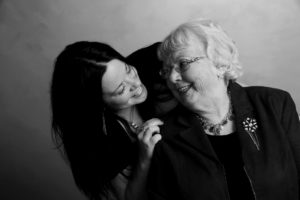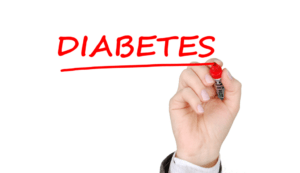Everyone’s eyesight is different and can require special care. However, women face their own unique challenges when it comes to eye health. To help you know what signs to look for, we’ve created this list of things you should know about women’s eye health in 2023.
When it comes to women’s eye health, it’s important to know that you are:
- Less likely to seek care
- At higher risk of age-related eye diseases
- More likely to experience hormone-related eye problems
- At greater risk for migraines
- Starting to make better decisions about eye health
1. Less Likely to Seek Care
Women often fill the role of caregiver in most households, which includes making the majority of healthcare decisions for their families. While this is fortunate for spouses, children, and aging parents, it can also be at the expense of looking after their own health. Women need to look after their health, including their vision, to maintain their quality of life.
2. At Higher Risk of Age-Related Eye Diseases
Women tend to live longer on average which puts them at higher risk for age-related eye diseases. This includes common age-related eye problems such as:
- Cataracts
- Glaucoma
- Age-related macular degeneration
Cataracts
Cataracts are one of the most common causes of blindness worldwide and your risk only increases as you age. Cataracts are a clouding of your natural lens. This happens to everyone if you live long enough. As time goes on, the clouding gradually gets worse and can decrease your vision.
Common symptoms include:
- Glare from traffic when driving at night
- Much dimmer vision
- Needing a lot more light to read
Surgery can be performed to correct cataracts once they are affecting your vision enough. This procedure has vastly improved over the years and is similar to LASIK in the fact that they are able to correct your distance vision without glasses.
Glaucoma
Glaucoma gradually steals your peripheral (side) vision by damaging your optic nerve. This can eventually begin to affect your overall vision if you don’t receive treatment. Glaucoma progresses slowly and usually doesn’t have any noticeable symptoms beyond vision loss. This makes early detection and treatment essential in order to protect your sight. The best way to catch something like glaucoma early is routine annual vision exams.
Click here to learn the symptoms, causes, and treatments for glaucoma!
Age-Related Macular Degeneration
Age-related macular degeneration is caused by the thinning of the macula near the retina. Unlike glaucoma which affects your side vision, it affects your middle (central) vision. This causes objects to appear blurry whether near or far away. As with the above diseases, it often goes unnoticed until its later stages making early detection and treatment extremely important.
3. More Likely to Experience Hormone-Related Eye Problems
Women are more likely to experience hormone-related eye problems. This is especially true for dry eye as you get older. This is due to the changes in estrogen and other sex-related hormones changing over the span of your life. For example, dry eye is more common for women during menopause due to hormones such as estrogen fluctuating up and down.
Women are also more likely to experience dry eye during pregnancy or during menstruation. The condition can also be triggered while on birth control or wearing contact lenses. Researchers aren’t currently sure why any of this is the case. What is important to know is that they’re at higher risk and can take precautions to feel more comfortable.
Female sex hormones aren’t the only factor for dry eye in women. While women and men both make testosterone, it may be another factor in women developing dry eye. For instance, testosterone can cause polycystic ovary syndrome (PCOS) in women. This condition results in cysts and ovulation problems along with dry eye.
To learn about the difference between dry eyes, eye allergies, and eye infections, click here!
4. At Greater Risk for Migraines
Millions of Americans suffer from migraine disease. However, women are actually three times more likely than men to develop the condition. Many people associate migraines with severe and debilitating headaches, but it’s actually more likely to result in sensitivity to light and severe eye pain.
Those suffering from migraines may also experience seeing “auras” in the form of:
- Sparks
- Bright spots
- Other visual disturbances
Women are twice as likely to experience migraine auras than men. Unfortunately, there isn’t much research on the links between migraines and vision. On a more positive note, migraine sufferers are able to seek treatment and take steps to improve their wellness. This can make living with the condition much more manageable, regardless of whether you’re a man or woman.
5. Start Making Better Decisions About Eye Health
Women face their own unique challenges when it comes to eye health. On the bright side, there are clear and easy steps you can take to protect both your vision and overall health.
This includes:
- Getting a comprehensive eye exam
- Eating a healthy diet
- Managing your weight
- Not smoking
- Knowing your family medical history
- Wearing protective eyewear when outdoors or working
Comprehensive eye exams are an essential part of any healthcare regimen, giving Dr. Travis Thompson and Dr. Catherine Abbott a better view of the structures of your eyes. Eating a healthy diet including fish rich in omega-3s, fresh citrus fruits, and leafy greens ensures that your eyes get the vitamins and nutrients they need to stay healthy and function properly.
Managing your weight helps with other diseases that can affect your vision such as diabetes. Not smoking is essential for reducing your risk of cataracts, glaucoma, and age-related macular degeneration. Knowing your family medical history can give your eye doctor an idea of what to look out for. Wearing protective eyewear will also help protect your eyes from cataracts and age-related macular degeneration.
Do you need an eye exam in Knoxville, TN? Contact us today to schedule your appointment!
Women are more likely to be primary caregivers and healthcare decision-makers, often at the expense of their own health. Women also tend to live longer putting them at increased risk of age-related eye diseases. Hormonal changes also put you at higher risk of issues such as dry eye. Migraines are more common in women than men. Fortunately, there are steps you can take to protect your vision and quality of life.
Hardin Valley Eyecare & Optical has been serving Knoxville since 2009. Dr. Travis Thompson and Dr. Catherine Abbott specialize in the diagnosis and treatment of a wide array of eye diseases, conditions, and problems and are committed to improving the quality of life in the Knoxville community through enhanced vision. Located at 10904 Spring Bluff Way, you can schedule an appointment online or give us a call at (865) 888-0892.





